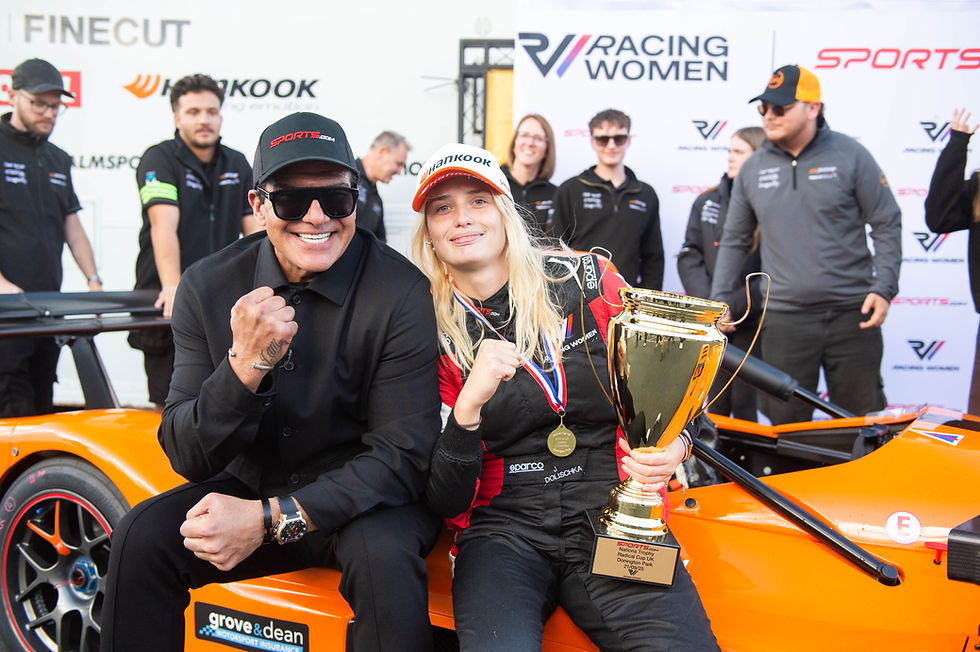In their own rhythm: neurodivergent women in the paddock
- Maya Czarzasty-Zybert

- Jul 14
- 3 min read
There’s always something happening in the paddock. Engines roar, screens flicker, and teams of people with lanyards and purpose in their eyes move quickly from one task to the next. Decisions are made in split seconds. Every gesture matters. Every second counts.
But in the midst of this high-speed world, there are those who operate differently. They think deeply. Feel intensely. Choose silence over noise, logic over small talk, focus over chaos. Among them are neurodivergent women.
Neurodiversity is not an exception – it’s a spectrum
Let’s start with the basics. Neurodiversity is a concept that describes the natural variations in brain functioning. It includes people who are autistic, have ADHD, dyslexia, dyspraxia, Tourette’s syndrome, and other traits that cause them to process information and emotions differently from the so-called neurotypical majority.
It’s not a disease or a deficit. It’s a different way of being in the world – one that comes with challenges, yes, but also with extraordinary gifts. Neurodivergent individuals often show deep focus, original creativity, analytical thinking, honesty, and attention to detail.
In theory, it sounds beautiful. In practice – it can be incredibly hard. And when you add to that the fact that they’re women?
Double norms, double masking
Being a woman in motorsport is still a challenge. Being a neurodivergent woman in this environment is a whole other level. It often requires masking one’s traits, learning complex social codes, and trying to fit into a world that was not designed with neurological diversity – or women – in mind.
A woman with ADHD might be seen as “disorganized” or “impulsive,” even though her brain is moving at lightning speed. An autistic woman might be perceived as “cold” or “uncommunicative,” when in fact she’s simply processing social signals differently.
How many times must one smile when sensory overload is unbearable? How often pretend that “everything’s fine” when the mind is silently begging for a moment of quiet?
And yet – they’re there
You won’t always see them on the front pages. They’re rarely in the spotlight of Formula 1 coverage. But they are there – in data analysis teams, simulators, engineering departments, communications offices, and strategy meetings. Sometimes they’re drivers – the ones who race “differently” but with incredible consistency and a deep sense of the track.
They work quietly, with immense dedication and precision. Sometimes they need more time to adapt. Sometimes they process information in a way the team isn’t used to. But when given the space to be themselves, they bring a unique and powerful perspective.
In the paddock – just like in the world of science or technology – neurodiversity can be a source of innovation. Because who better than someone who thinks outside the box to spot solutions others would miss?
What does an inclusive paddock look like?
Inclusion doesn’t mean treating everyone the same. It means creating environments where everyone can operate in their own rhythm – without fear of being misunderstood or excluded.
So what does this look like in practice:
understanding sensory needs – quiet spaces, alternatives to loud briefings;
flexible communication models – not everyone needs to shine in small talk to lead a technical breakthrough;
mentoring that respects cognitive differences – matching teaching styles to different ways of learning;
potential-based recruitment – because not every career path fits into a standard CV.
This isn’t just an act of goodwill – it’s a smart strategy. Motorsport needs fresh thinking, emotional resilience, and creativity. Neurodivergent women bring all of that – if only someone takes the time to notice.
In their own rhythm – and truly authentic
When we hear the word “speed,” we often think of racing. But sometimes the most important victories don’t happen on track. They happen quietly – when someone dares to be themselves in a world that doesn’t always understand.
Neurodivergent women in the paddock show us that a different rhythm isn’t a weaker one. In fact, it may be the rhythm that leads to the most transformative breakthroughs. And perhaps it's through them that motorsport will become truly future-ready – not just technologically, but socially.
Because the future – like speed – comes in many forms.And there are many paths to the finish line.




Comments